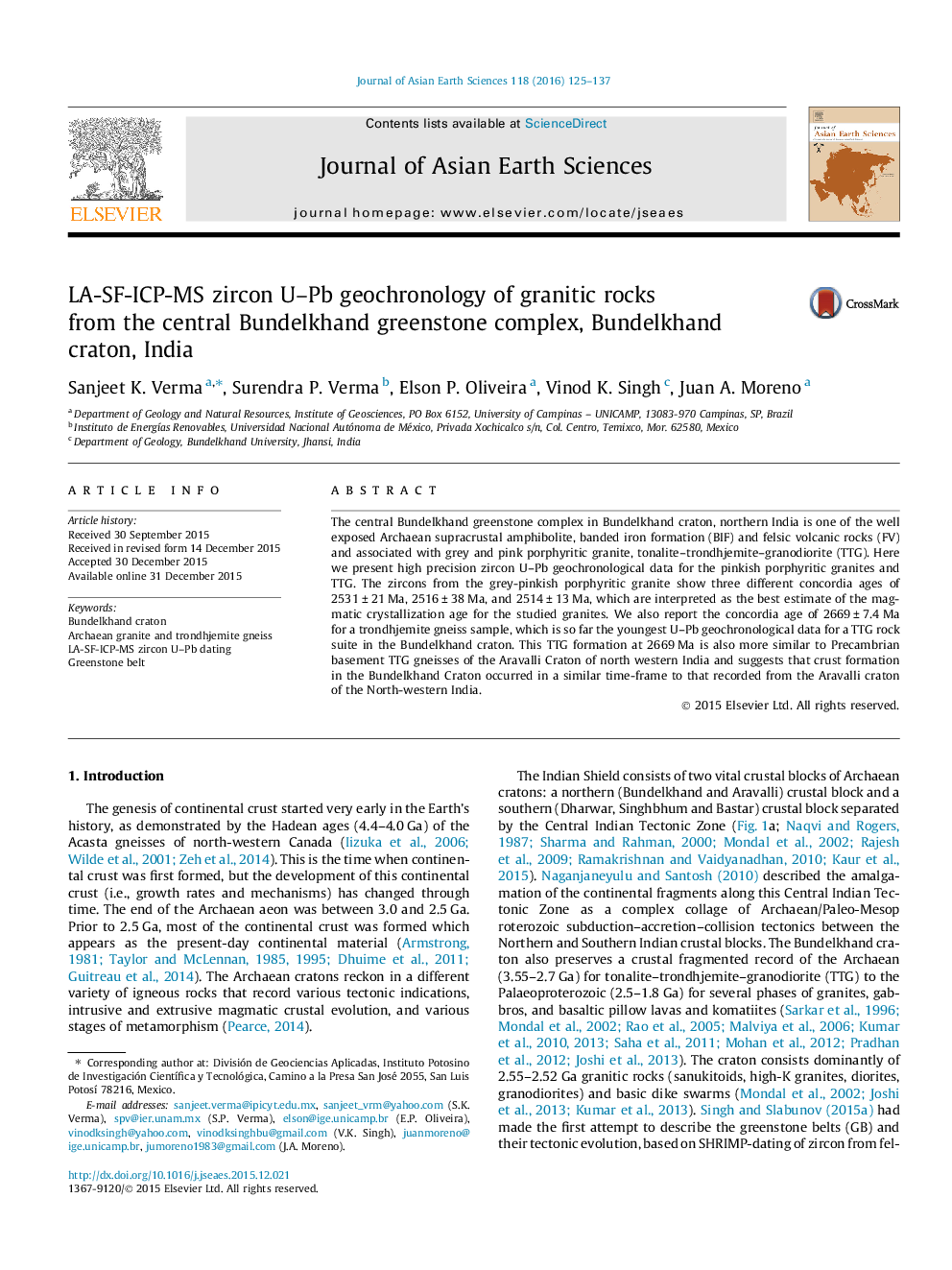| Article ID | Journal | Published Year | Pages | File Type |
|---|---|---|---|---|
| 4730145 | Journal of Asian Earth Sciences | 2016 | 13 Pages |
•The ages of the granites and TTG rocks of the Bundelkhand craton were reviewed.•We provided new LA-SF-ICP-MS zircon U–Pb ages.•We obtained three more new ages of granite and one new age of TTG.•We reported youngest age of TTG so far.
The central Bundelkhand greenstone complex in Bundelkhand craton, northern India is one of the well exposed Archaean supracrustal amphibolite, banded iron formation (BIF) and felsic volcanic rocks (FV) and associated with grey and pink porphyritic granite, tonalite–trondhjemite–granodiorite (TTG). Here we present high precision zircon U–Pb geochronological data for the pinkish porphyritic granites and TTG. The zircons from the grey-pinkish porphyritic granite show three different concordia ages of 2531 ± 21 Ma, 2516 ± 38 Ma, and 2514 ± 13 Ma, which are interpreted as the best estimate of the magmatic crystallization age for the studied granites. We also report the concordia age of 2669 ± 7.4 Ma for a trondhjemite gneiss sample, which is so far the youngest U–Pb geochronological data for a TTG rock suite in the Bundelkhand craton. This TTG formation at 2669 Ma is also more similar to Precambrian basement TTG gneisses of the Aravalli Craton of north western India and suggests that crust formation in the Bundelkhand Craton occurred in a similar time-frame to that recorded from the Aravalli craton of the North-western India.
